Stutz Takes 6th Place in the Best Car Logos of All Time
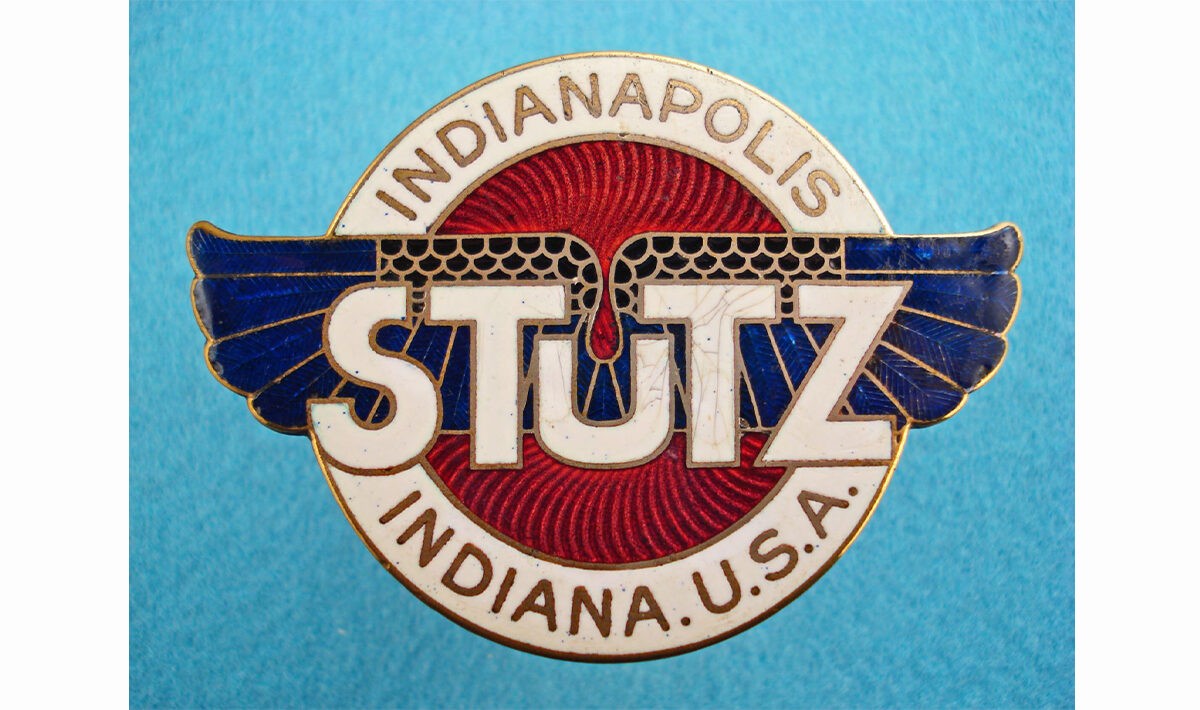
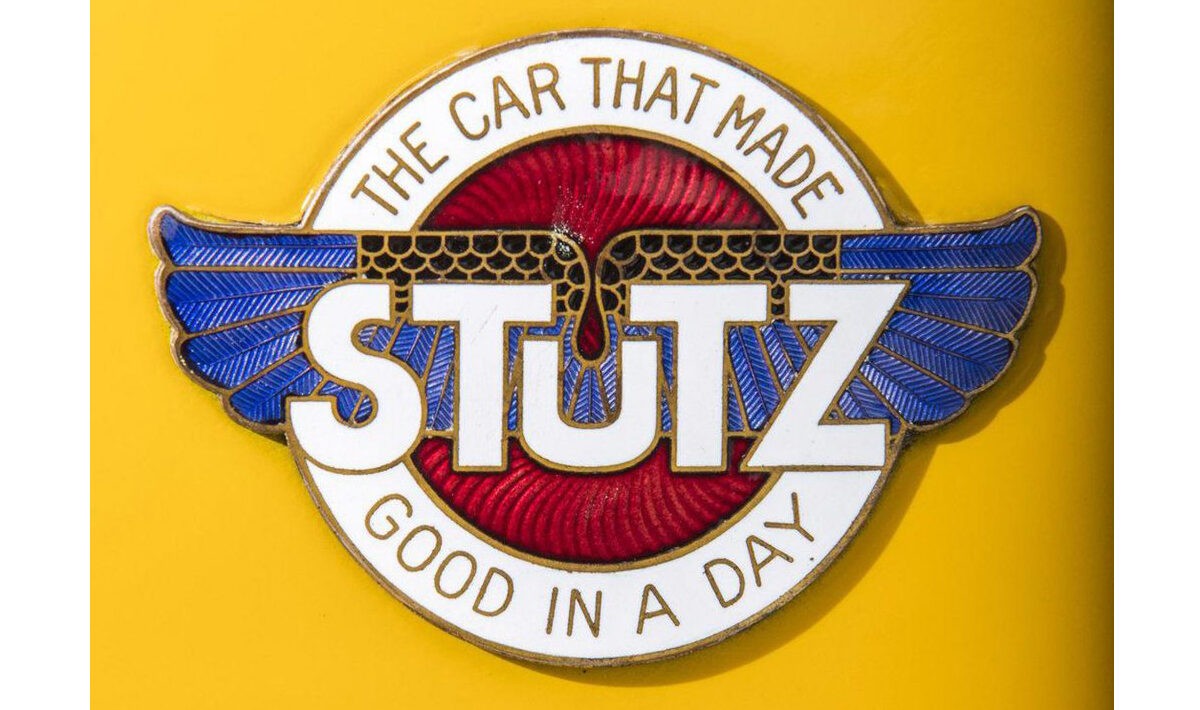
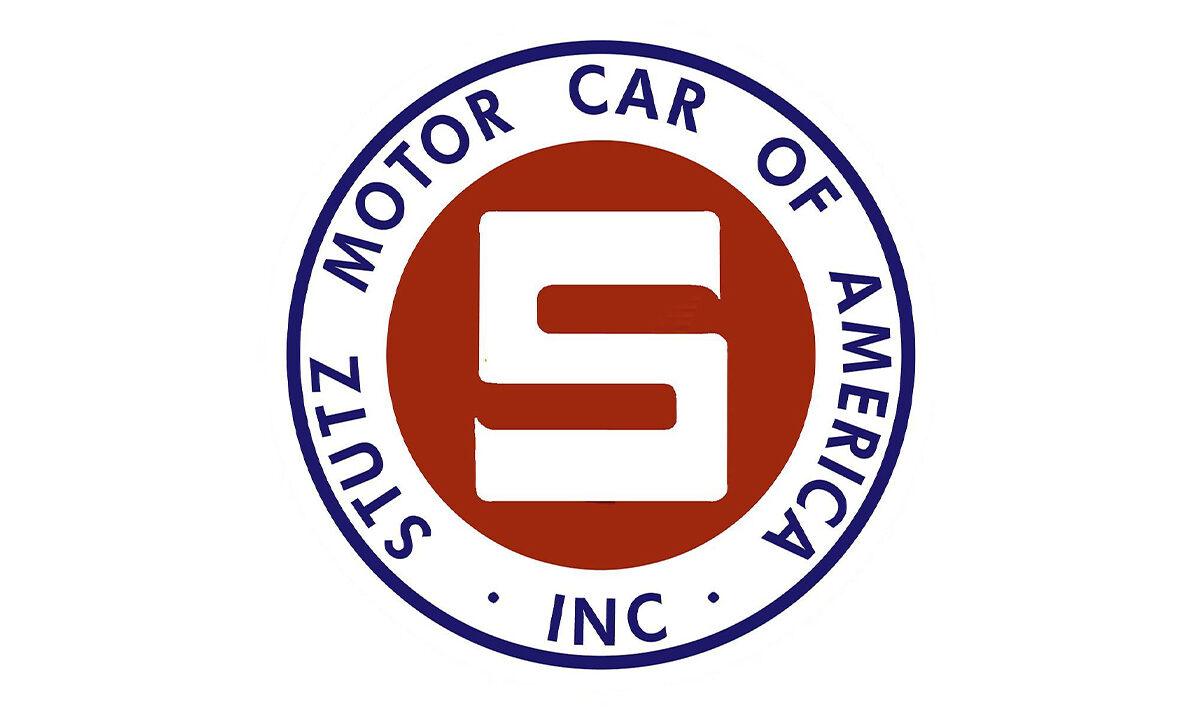
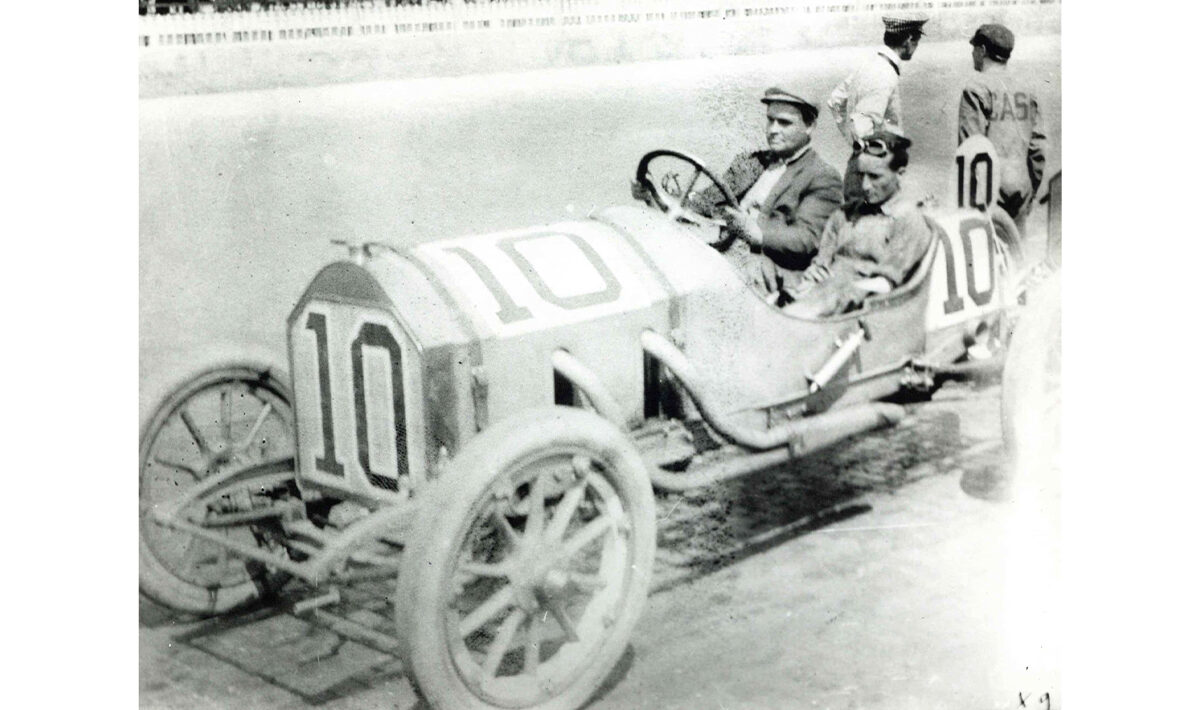
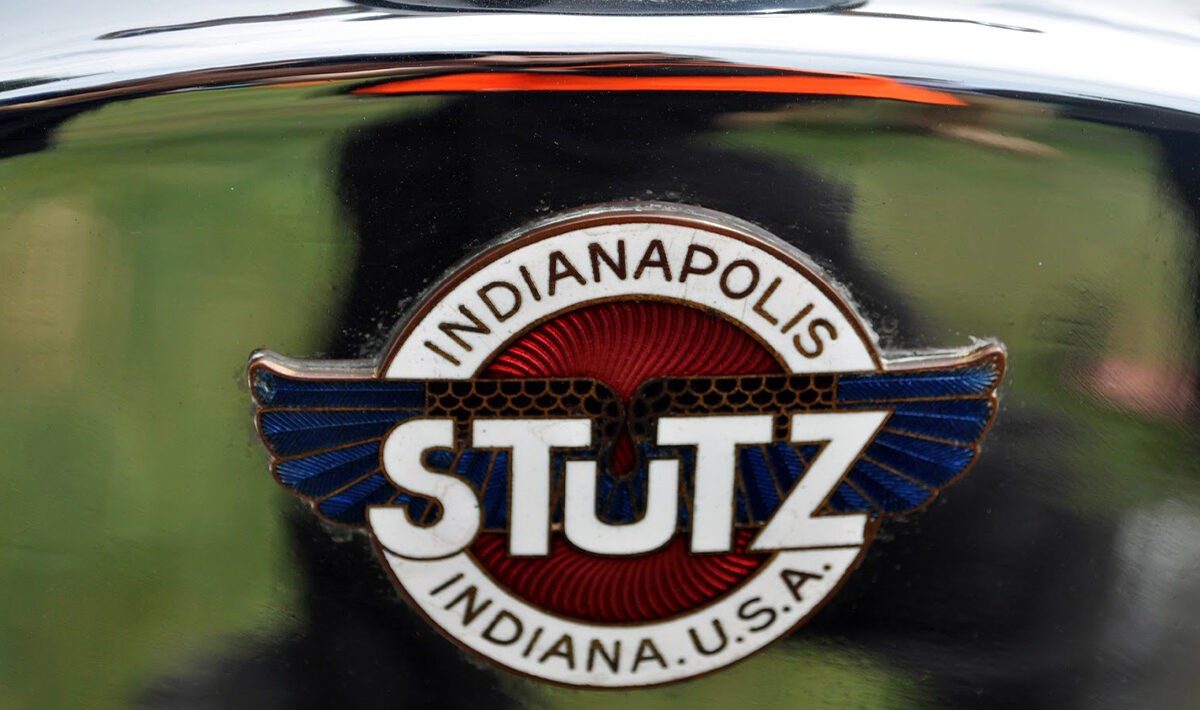
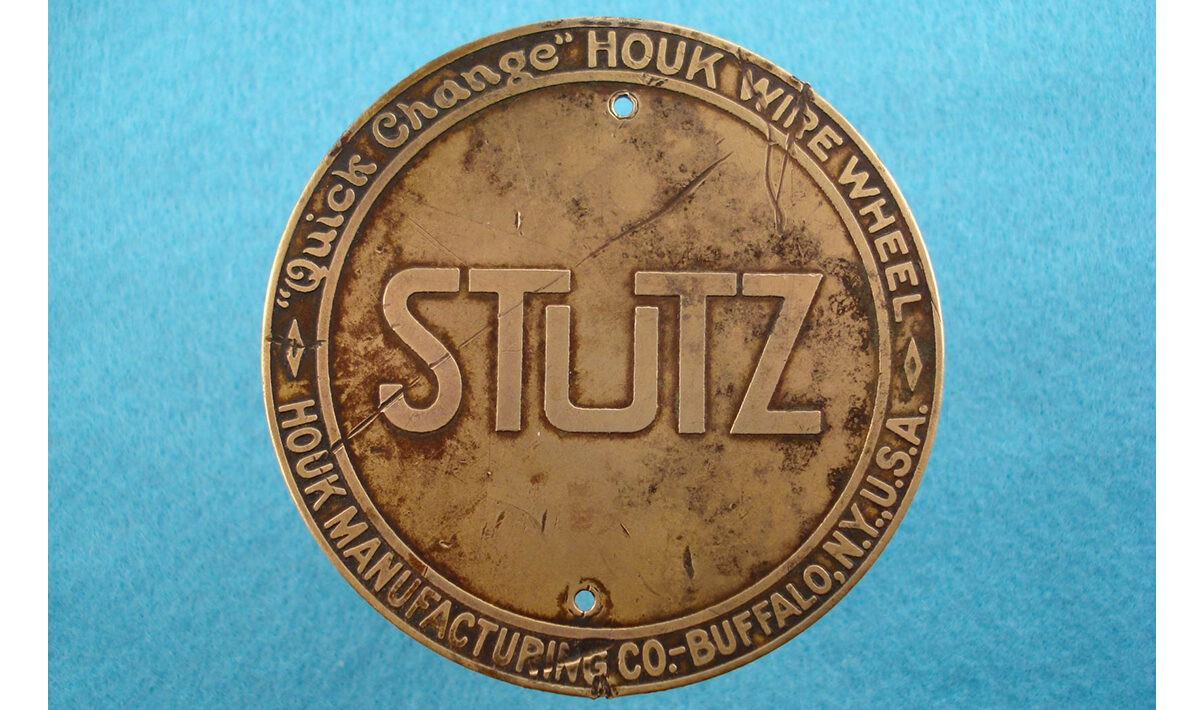
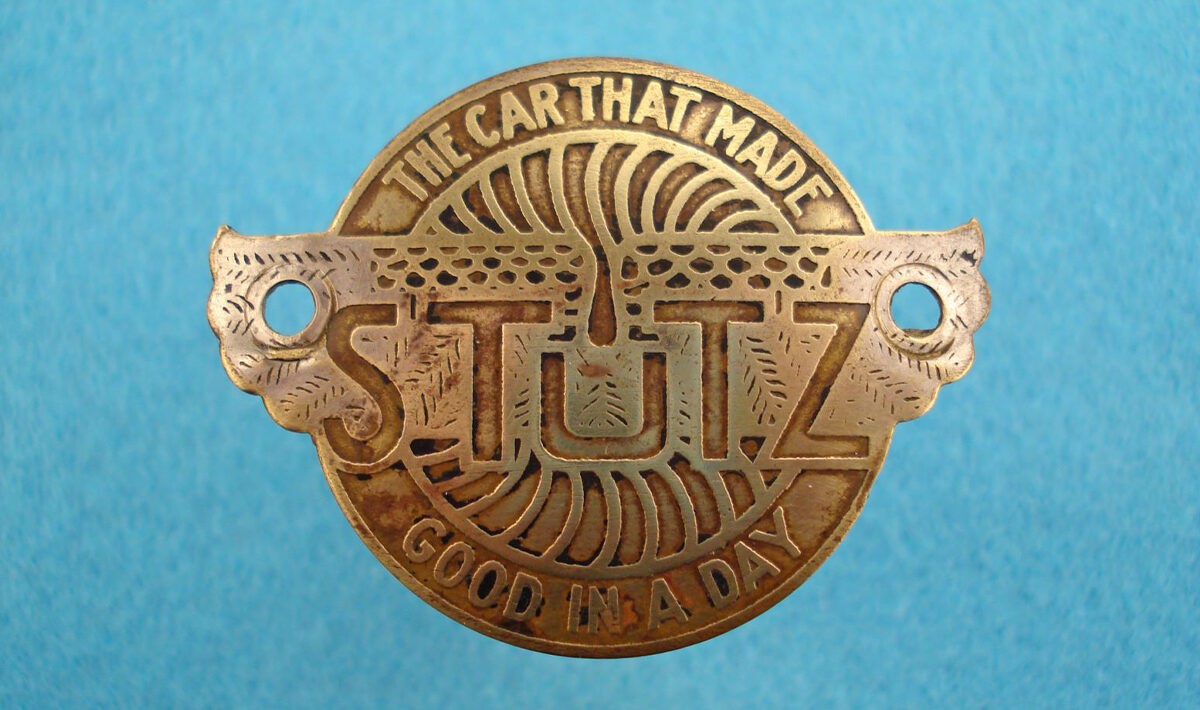
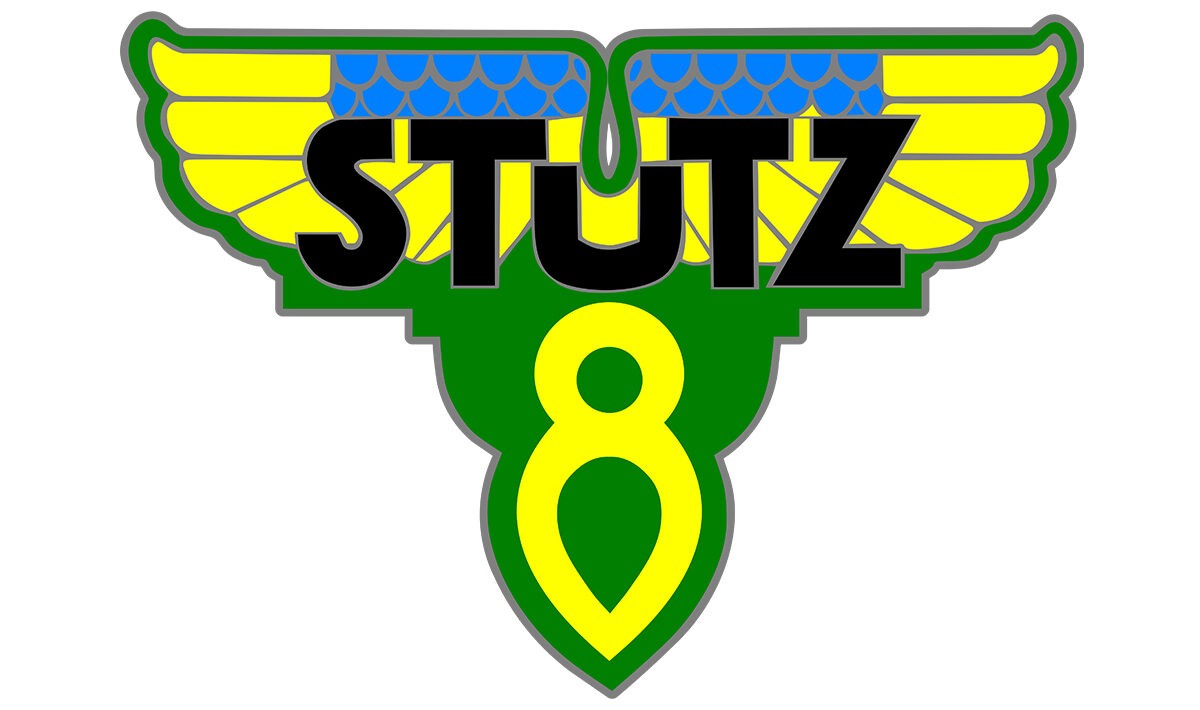
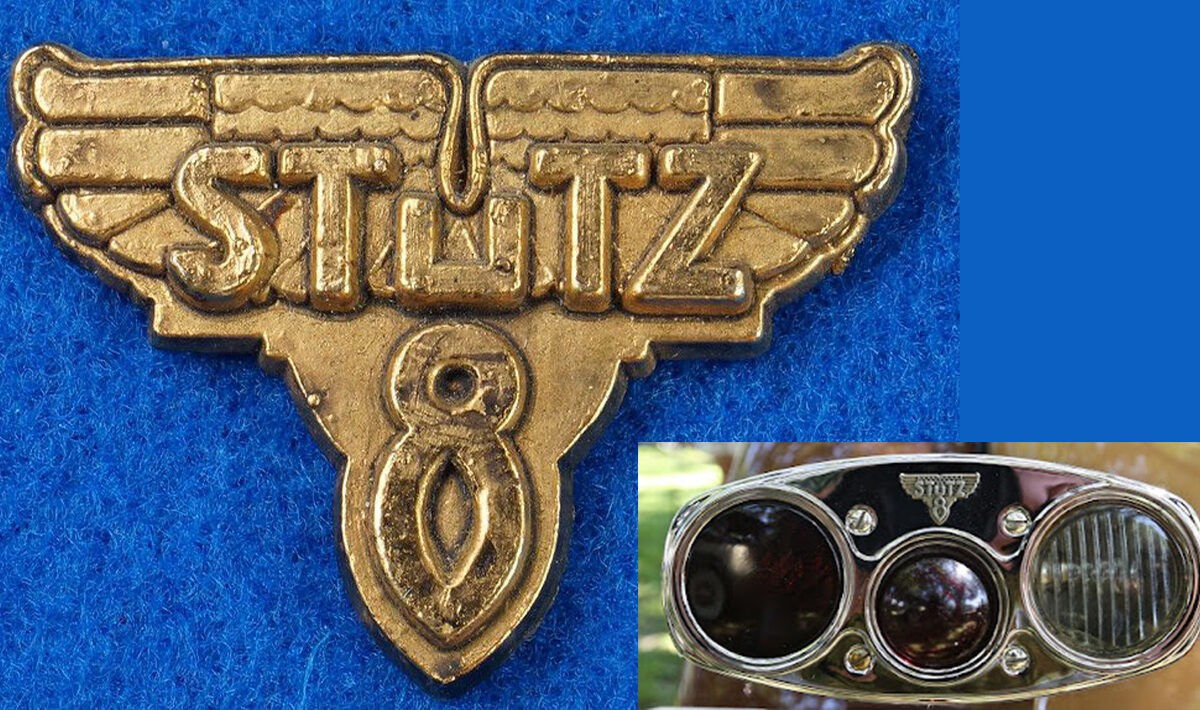
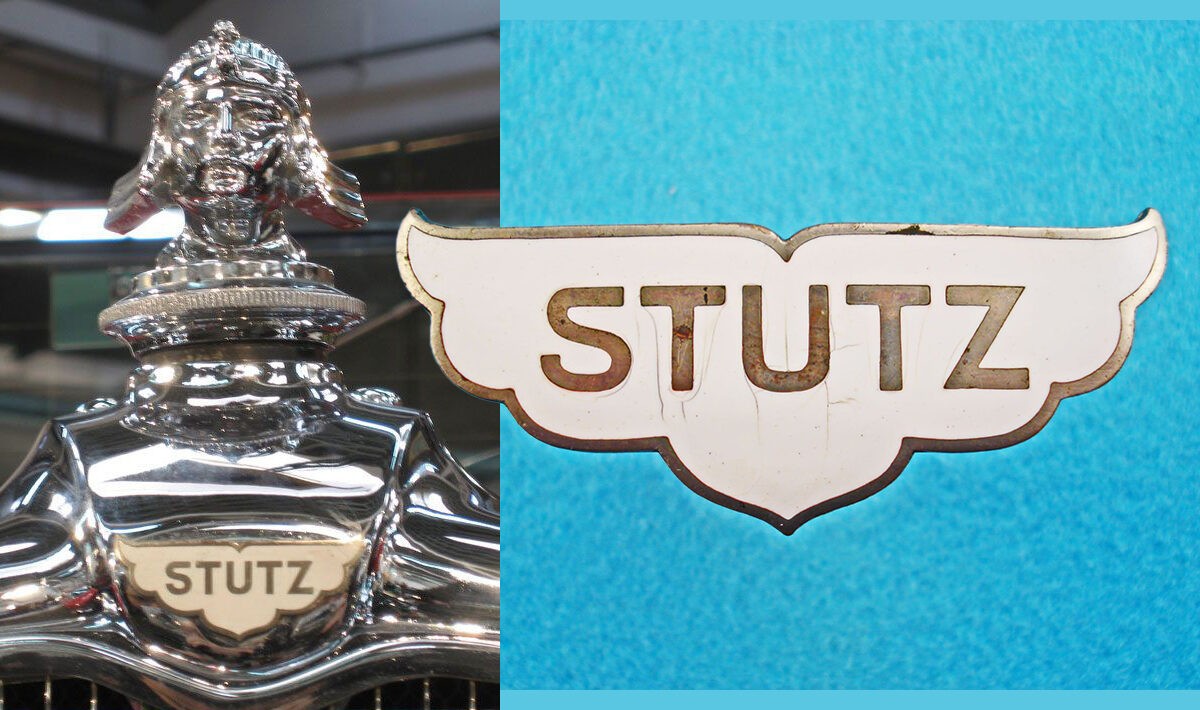
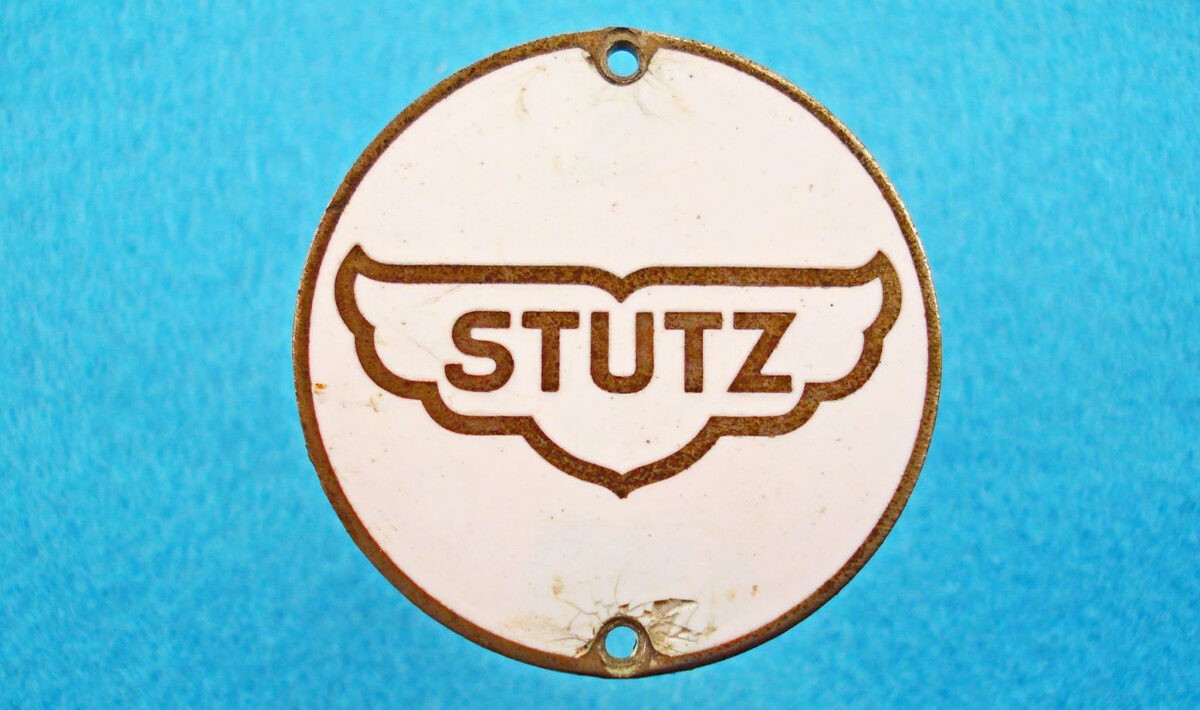
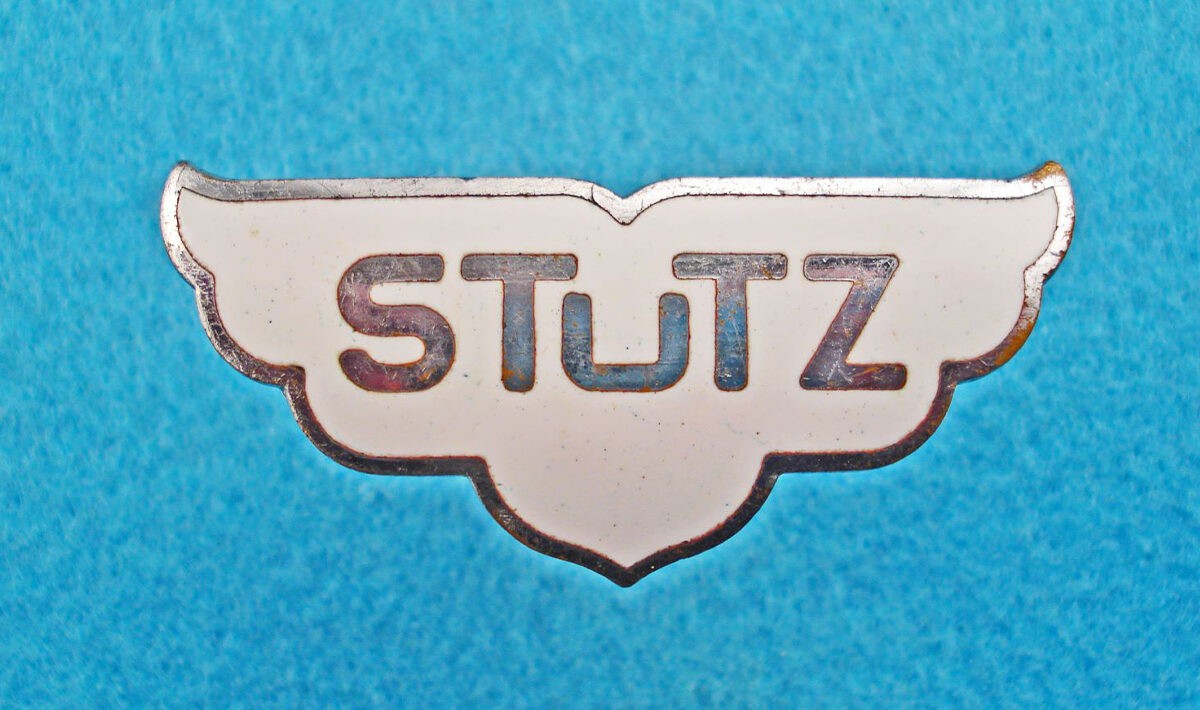
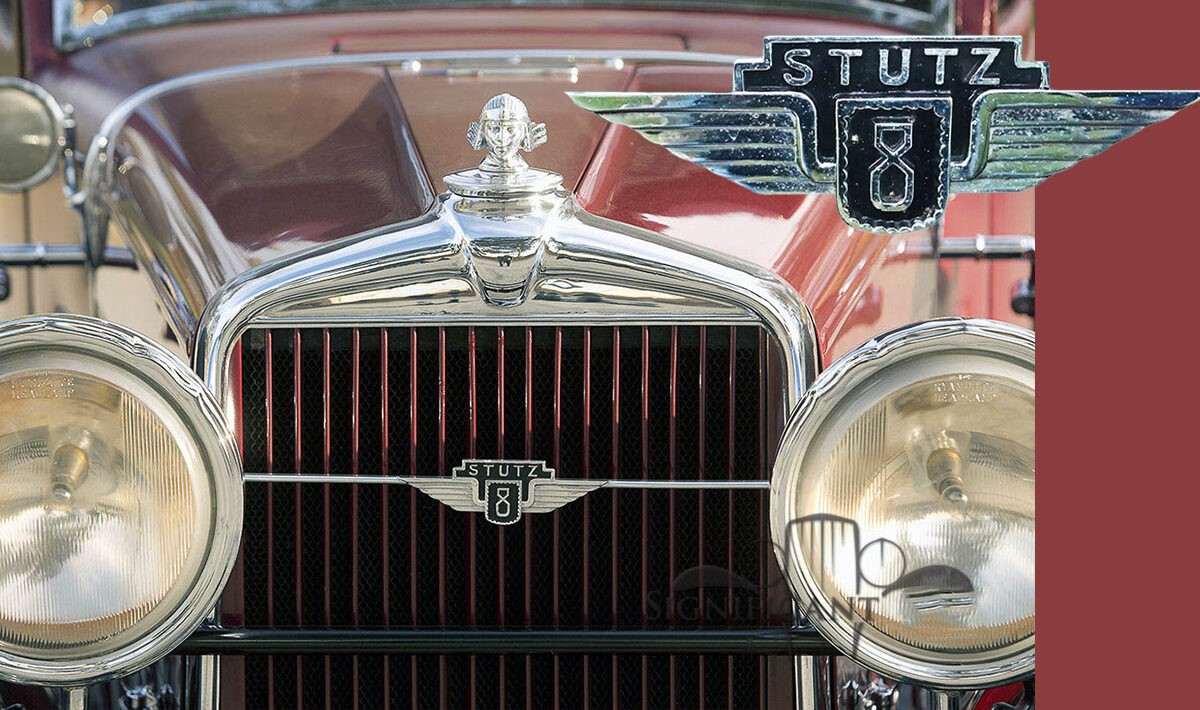
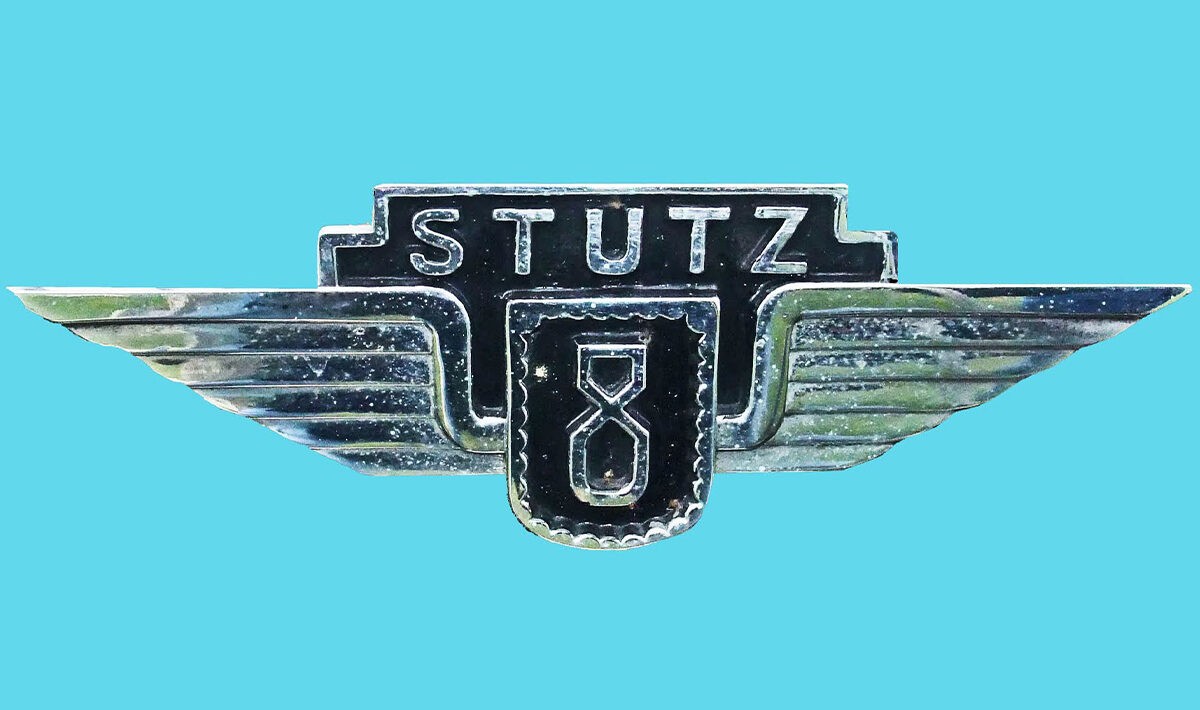

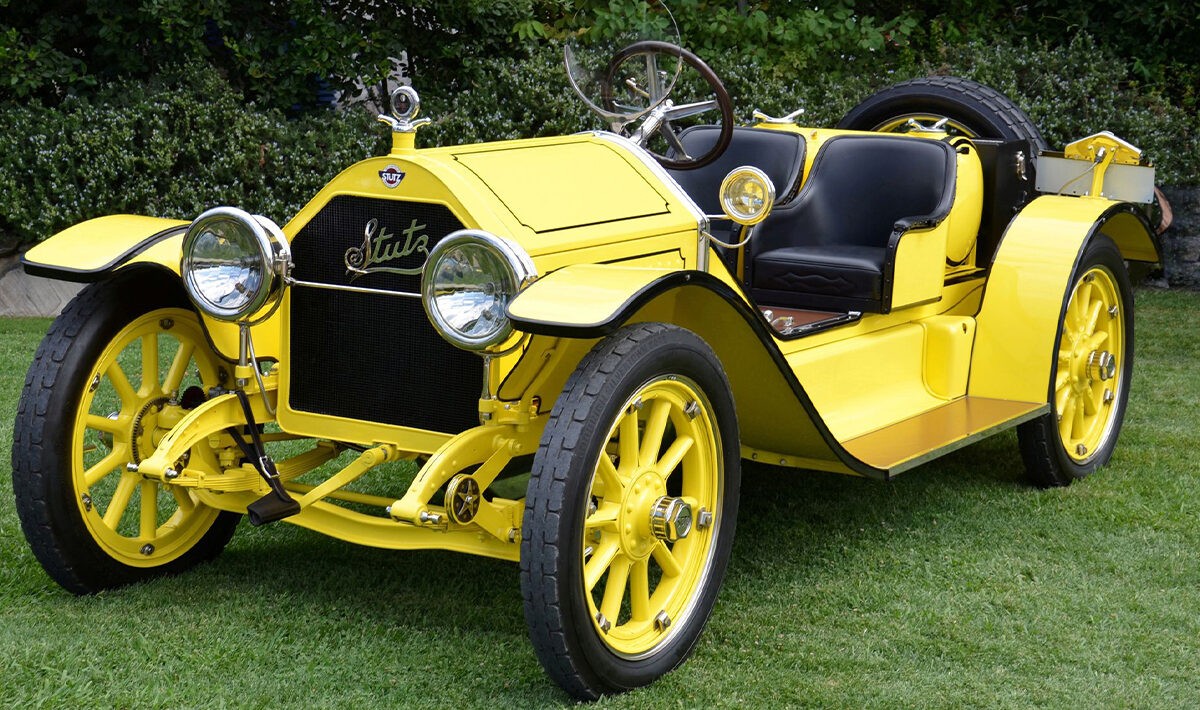
The Stutz Motor Car Company of America, Inc., based in Indianapolis, Indiana, USA, was known for producing luxury and high-end sports cars. The fast cars that Stutz produced throughout its history were actually America’s first sports cars and, from 1924, they made luxury cars for the rich and famous.
Stutz was founded in 1911 by Harry C Stutz, but not initially with his surname. At that time Harry was well-known in the auto industry for being a master of many jobs in that field. In 1911 he used his motoring skills to design a rear axle-mounted transmission, before founding the Ideal Motor Car Company to build it. At first, Harry acted as consultant to those creating the Empire car, but it wasn’t long before his perfectionism led him to building his own car. He wanted to show his car making mettle by entering it in the first Indy 500 race, where it took 11th place against much more powerful cars. The slogan for the Stutz car was born, later shown on their emblem, it was “The Car That Made Good in a Day”.
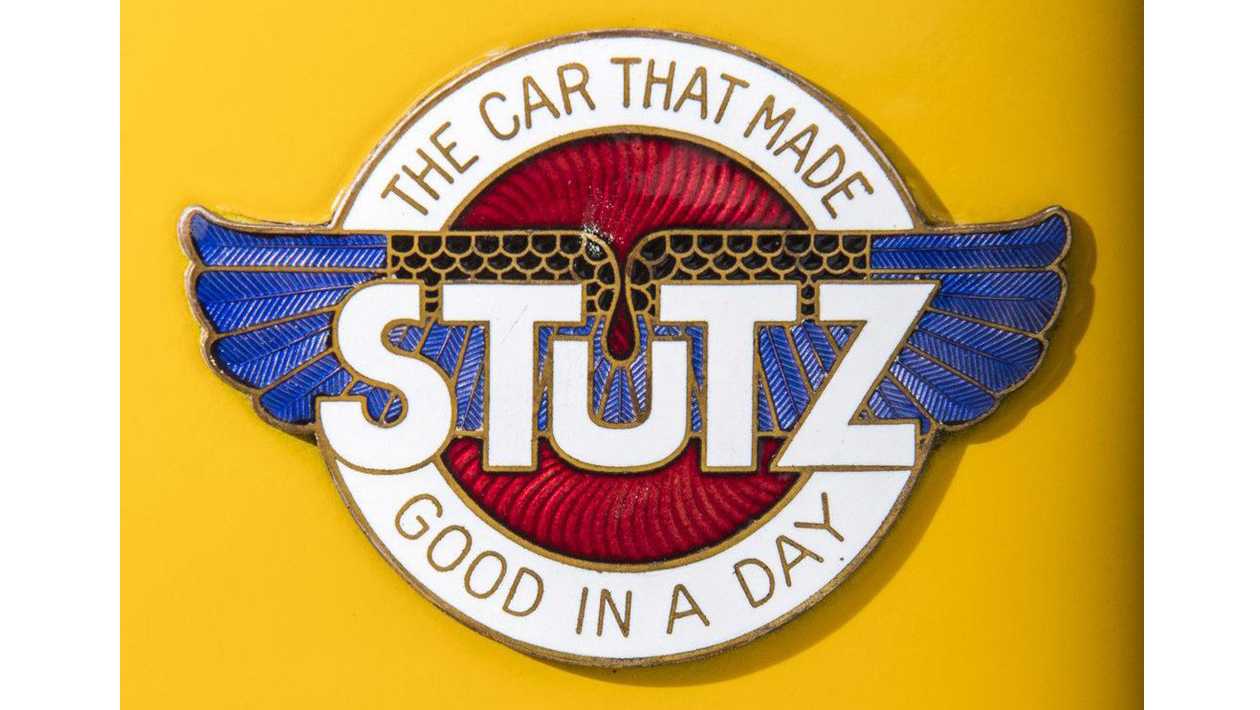
Stutz Emblems
This photo shows the Stutz that achieved 11th place in the Indy 500 race, and as you can see, did not carry an emblem.
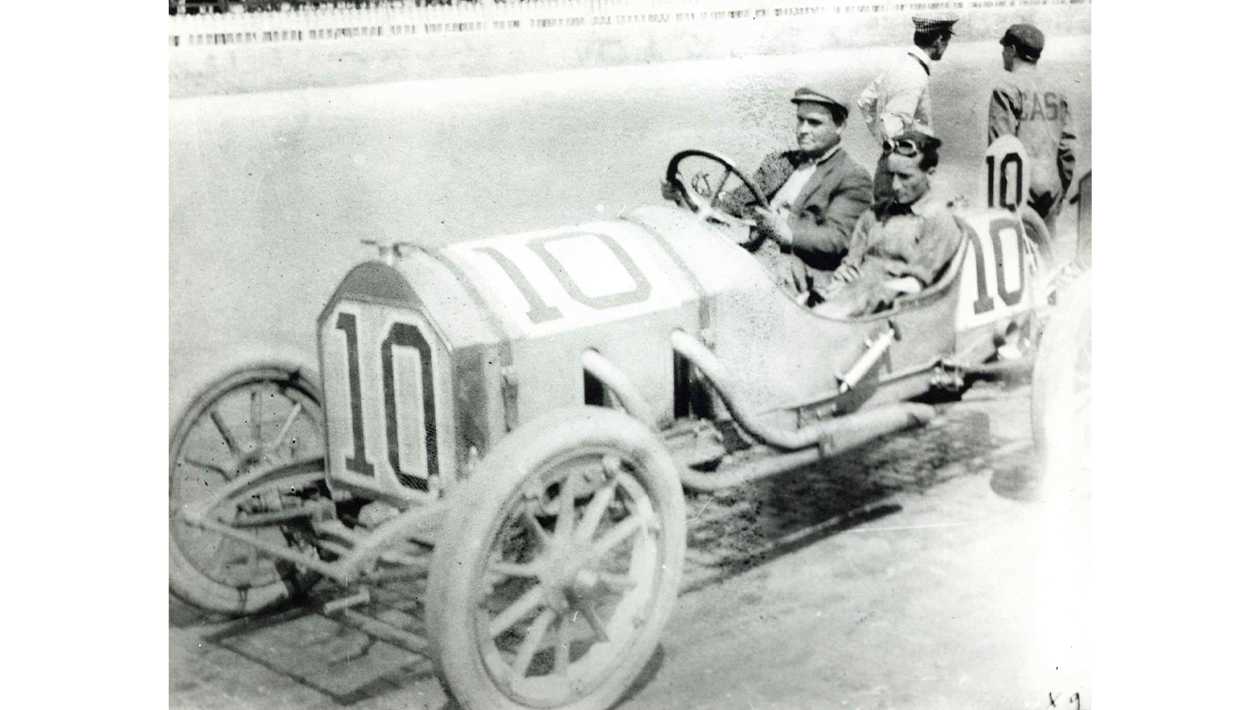
It wasn’t until the following year, 1912, that the Stutz Model A car carried an attractive red, white and blue enamel radiator emblem. It featured a unique ancient Egyptian scarab wing motif, and was used on the majority of Stutz cars up to 1926.
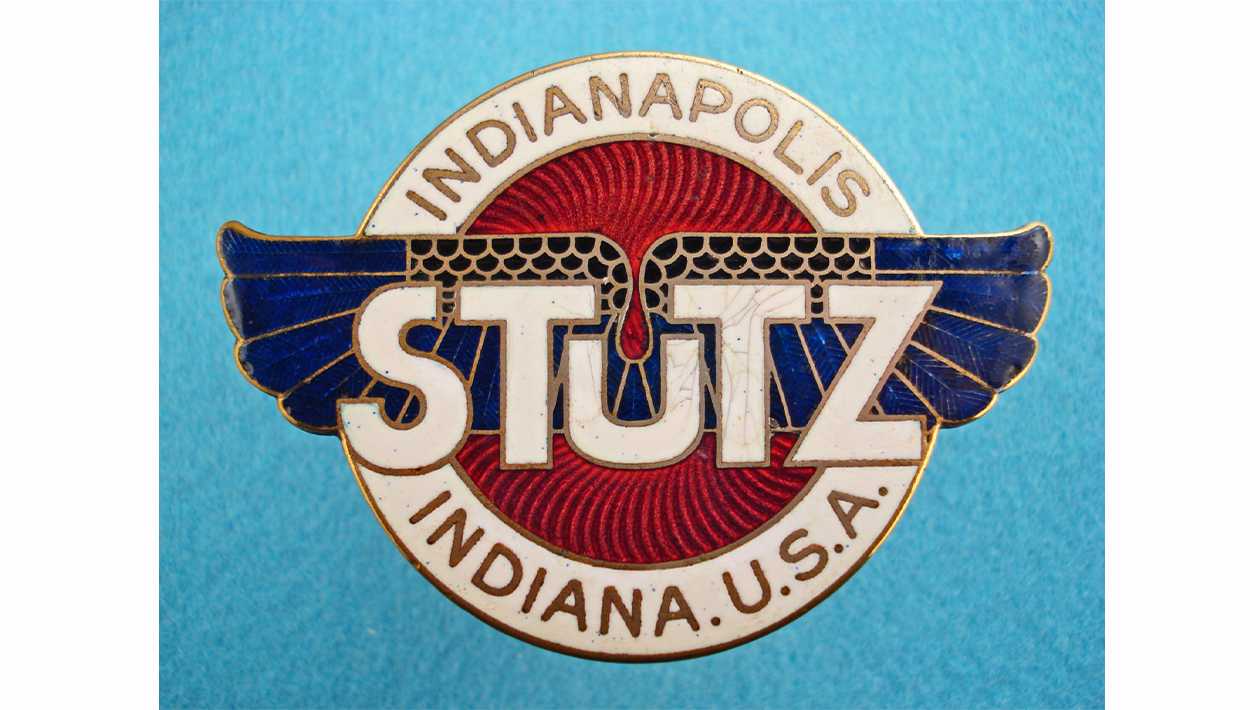
The Stutz Model A was a 60 hp four-cylinder that featured several body styles, including the renowned Bearcat model.
Stutz manufactured its famed Bearcat model over the next 5 years, alongside other body styles, featuring a mega T-head powerful four-cylinder engine of 361 cubic inch capacity. They continued to promote their cars on the racetrack and in 1915 Stutz was named America’s racing champion.
The Bearcat was an open two-seater car with a lengthy steering rod, a real racy looking motor with its gasoline tank positioned behind the seats. Its 70 hp six-cylinder motor helped it win 25 racing contests from the 30 it entered. In 1913 Harry C Stutz, alongside the other founder Henry F. Campbell, renamed the business to Stutz Motor Car Company. Stutz’s transaxle was manufactured by Stutz Auto Parts Company, which was merged into Stutz Motor Car Company.
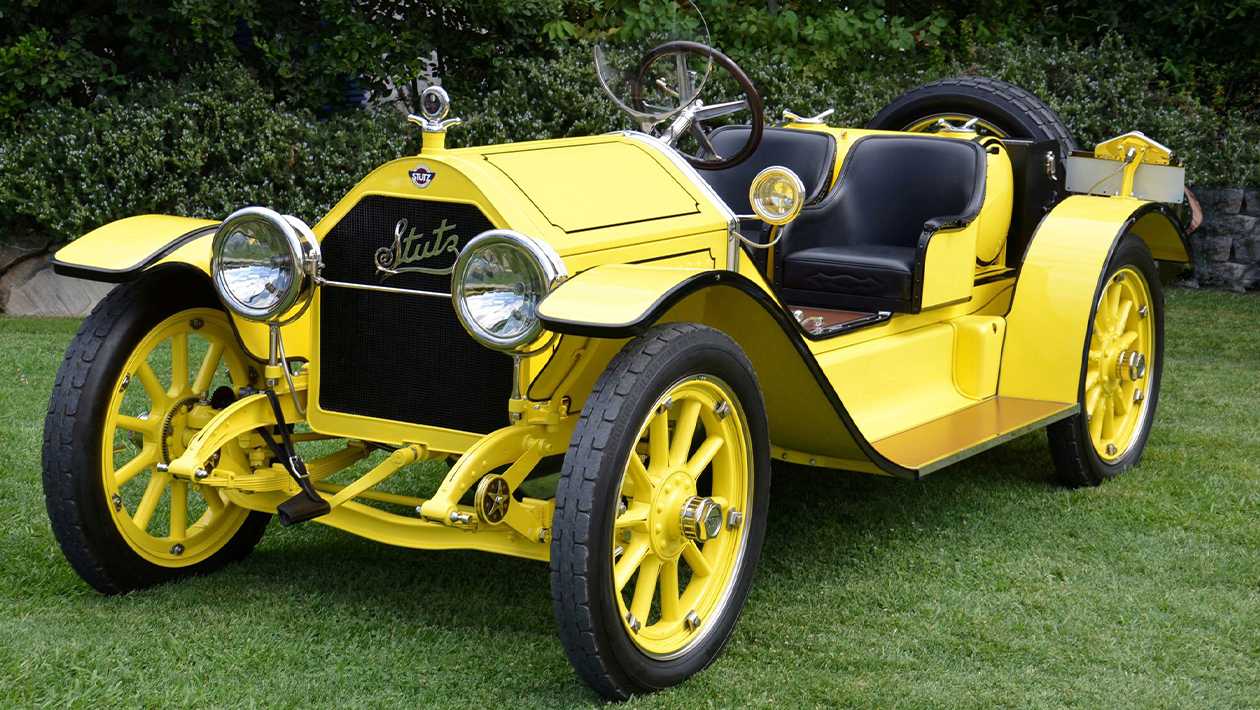
In 1915 the racing driver Cannon Ball Baker, who had won many races in a Bearcat, wrote his name in the record books when he drove a four-cylinder Bearcat from San Diego to New York in 11 days, 7 hours and 15 minutes.
It was in the same year that the Stutz radiator emblem was redesigned for use on the short-lived Stutz Series HCS, and due to its brief shelf-life is extremely rare.
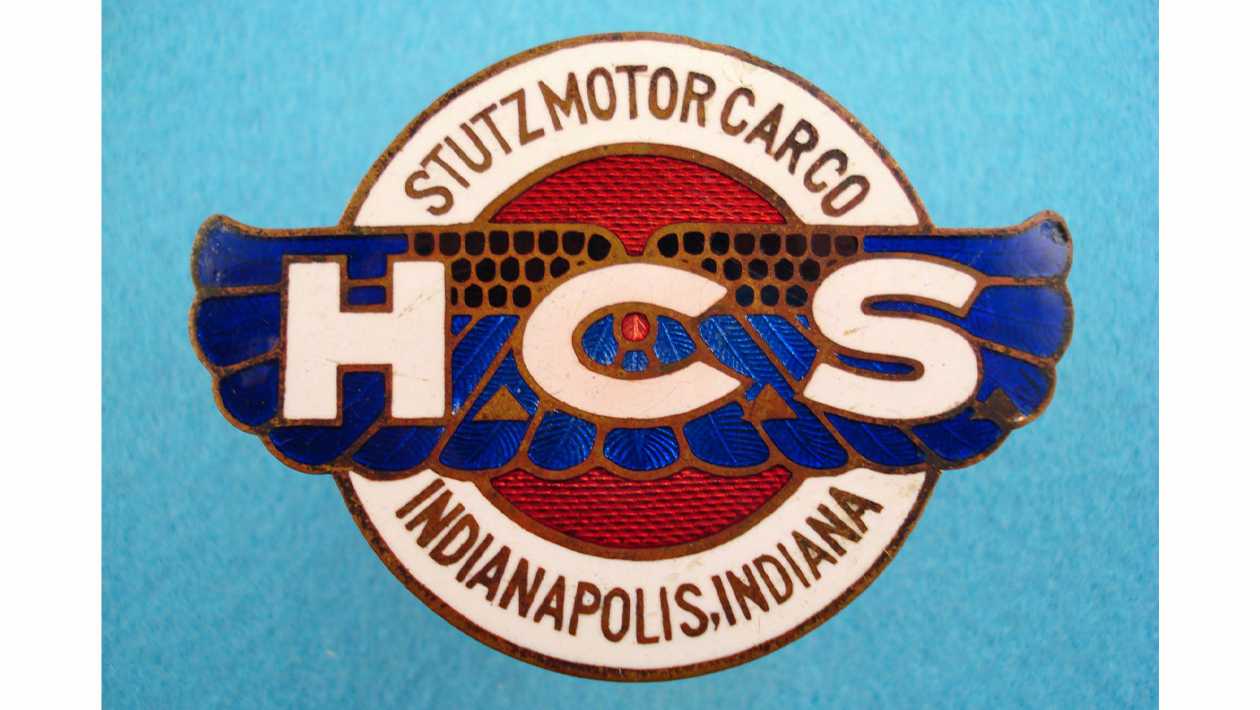
The Stutz success meant that sales grew from 266 cars to 1,535 between 1912 and 1916. This is why Harry Stutz decided to expand his facilities, and also went into manufacturing his own engines. This expansion required more finance, so the company had to go public. By 1916 Stutz Motor Car Company was under the control of financiers, and only 3 years later, in 1919, Harry Stutz left to create a new car called the HCS.
The Stutz name found on the logo was seen on the wire wheel hub emblems, as this picture shows.
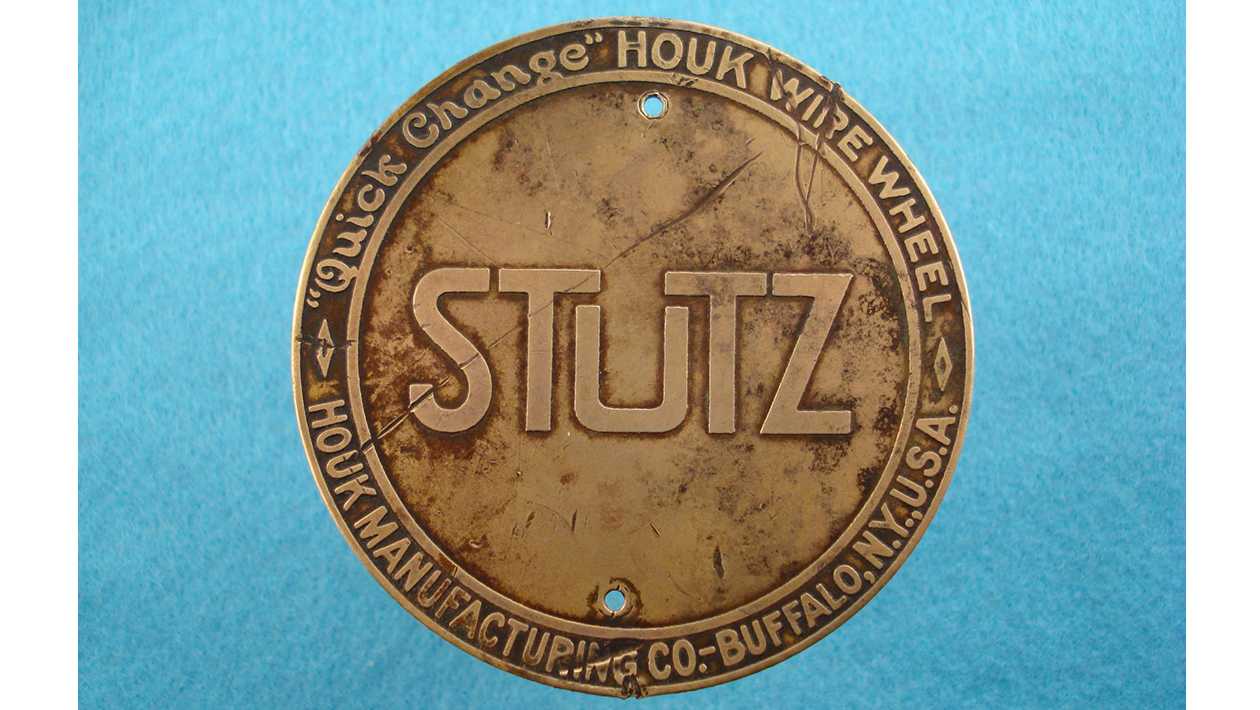
It was in 1923 that the Stutz Special Six appeared, carrying the inscription “The Car That Made Good In A Day” around the edge of the emblem. Below is a Stutz headlight emblem, and the first image in this article also shows this rare logo that is sought after by emblem collectors worldwide.
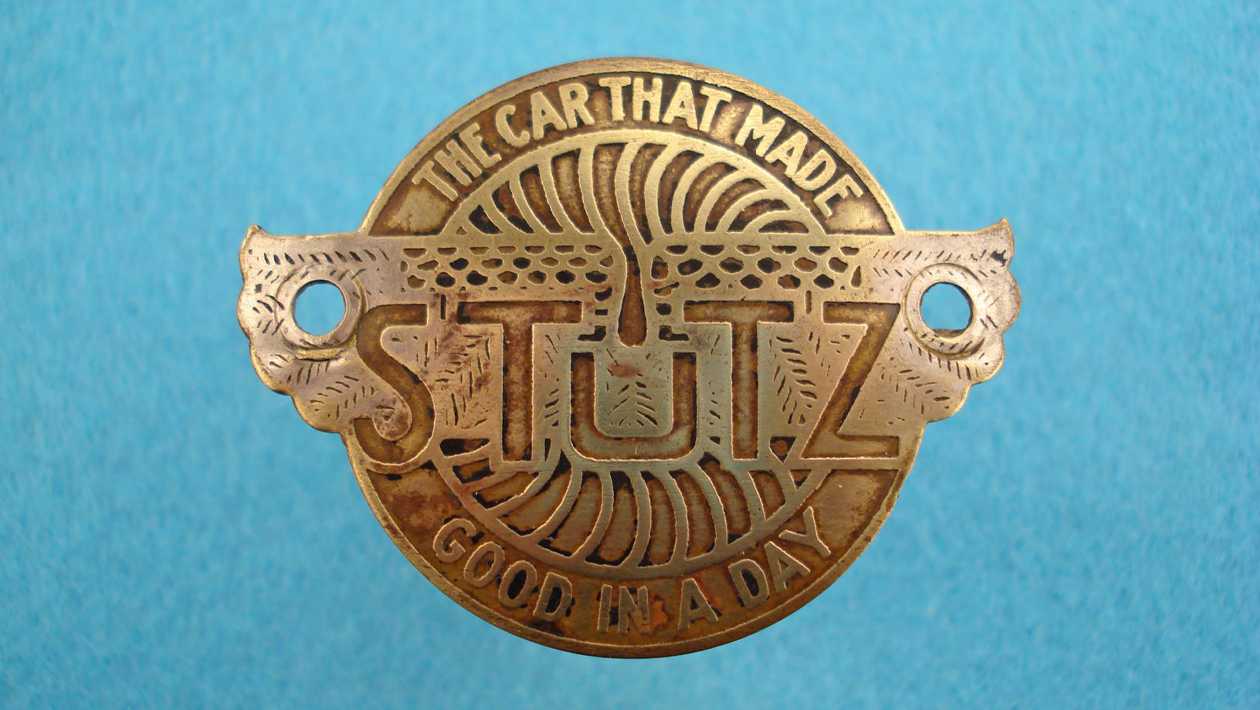
In 1925 the Stutz was redesigned from a tough racer to a more refined and striking automobile. A year later the Stutz Vertical Eight arrived, with innovative and sophisticated low slung bodies.
As this eight cylinder Stutz was introduced to the world, along with it came a complete redesign of Stutz’s emblem. Though it still featured the scarab wings motif, the colours changed to green, gold, sky blue, and black for the Stutz text. Again, this is a scarce radiator emblem.
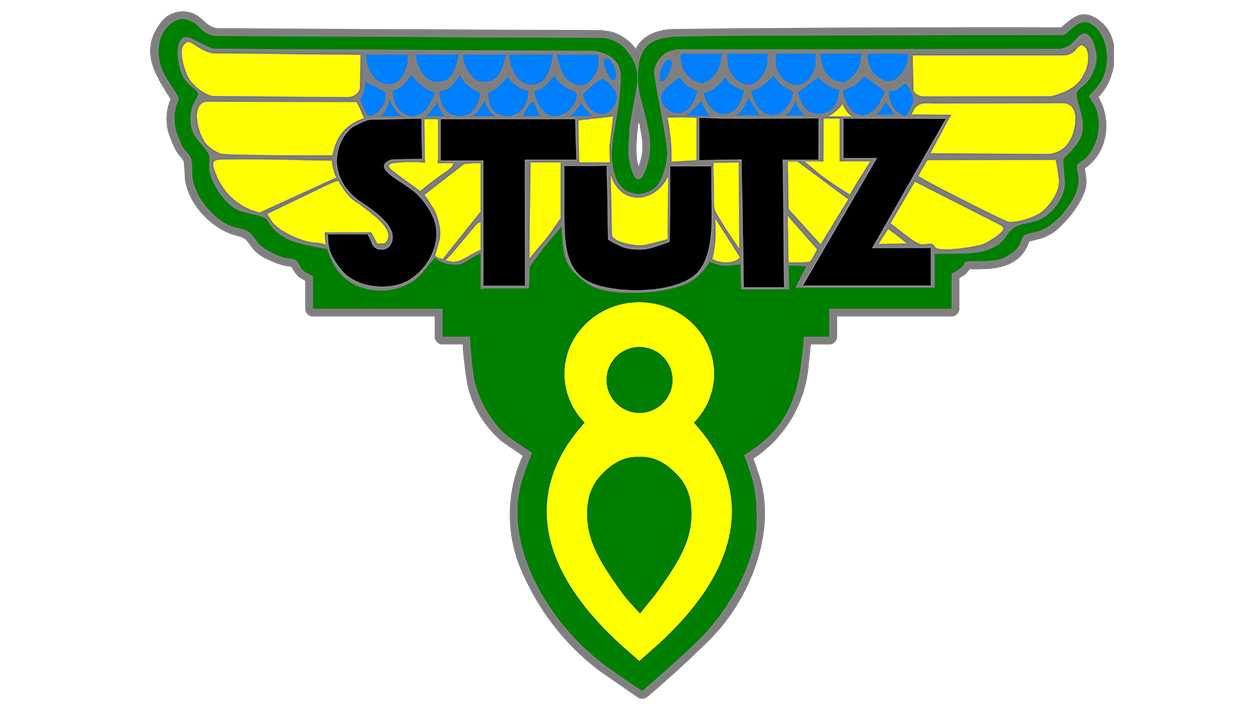
If you’re an emblem collector, you need to be aware that there are many copies of this Stutz radiator emblem, which mostly look identical to the original emblem. It is only when you look on the back of it that you can notice the difference: an internally threaded stud.
The Black Hawk speedsters were introduced in 1928 and went on to win many races, making it America’s fastest production car at 106 mph.
The pictures below show a small metal Stutz emblem, which in one picture is mounted centrally, above a tail light assembly.
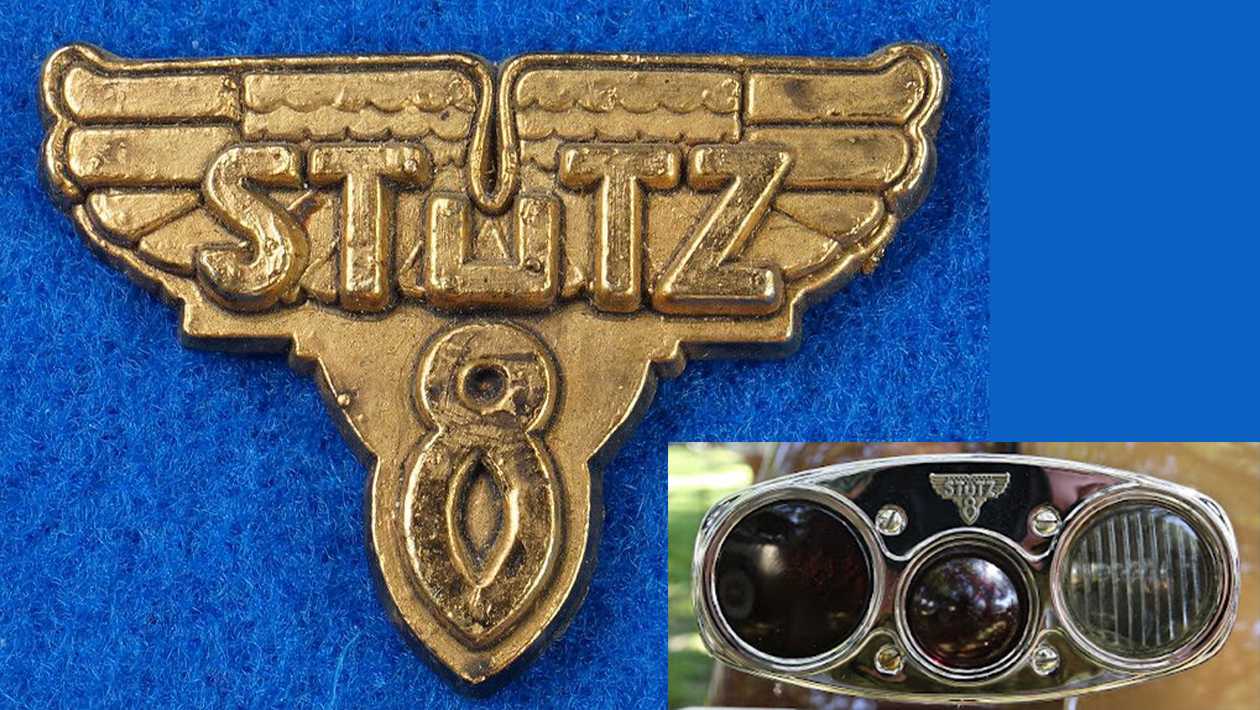
The Stutz emblem design was changed again for the Stutz Series BB, introduced in 1928, to a more simple, cream enamel radiator emblem resembling the scarab wing motif. Again, this Stutz radiator emblem is scarce.
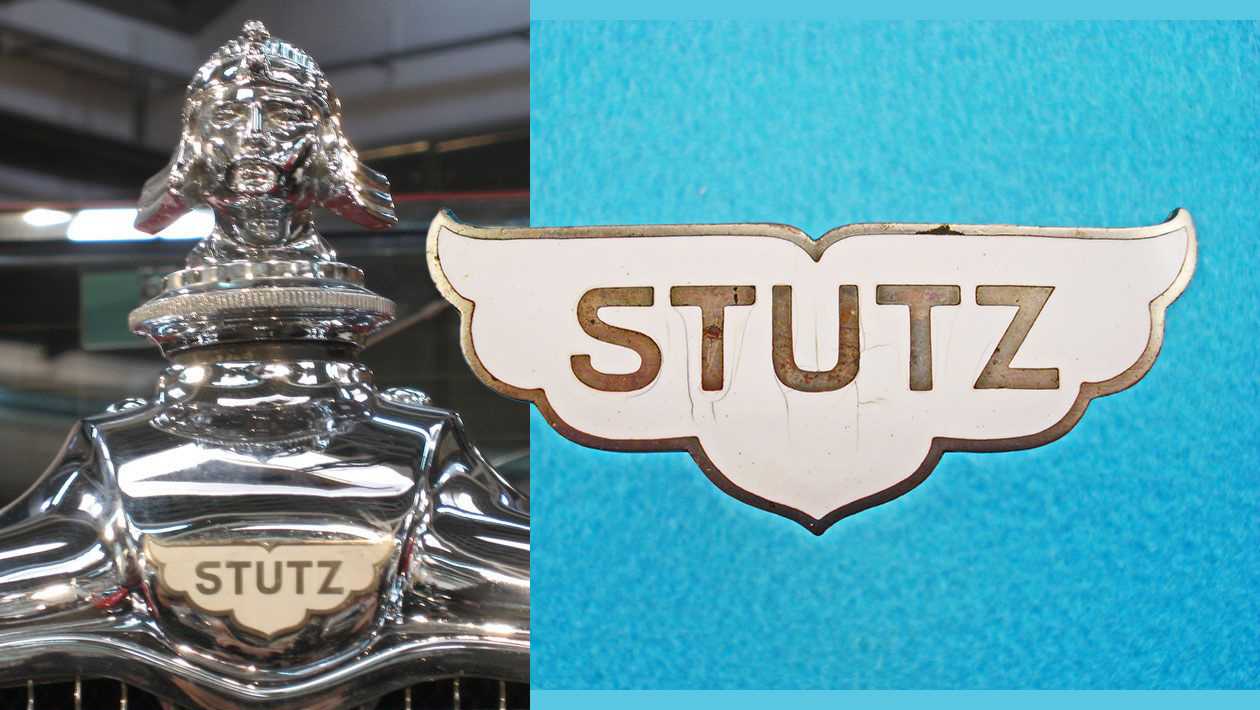
The lettering was later changed back to its original form with the ‘U’ fitting underneath each ’T’. the following white enamel Stutz emblem is a smaller version of the earlier Stutz Series BB radiator emblem with different lettering. This Stutz emblem is rare.
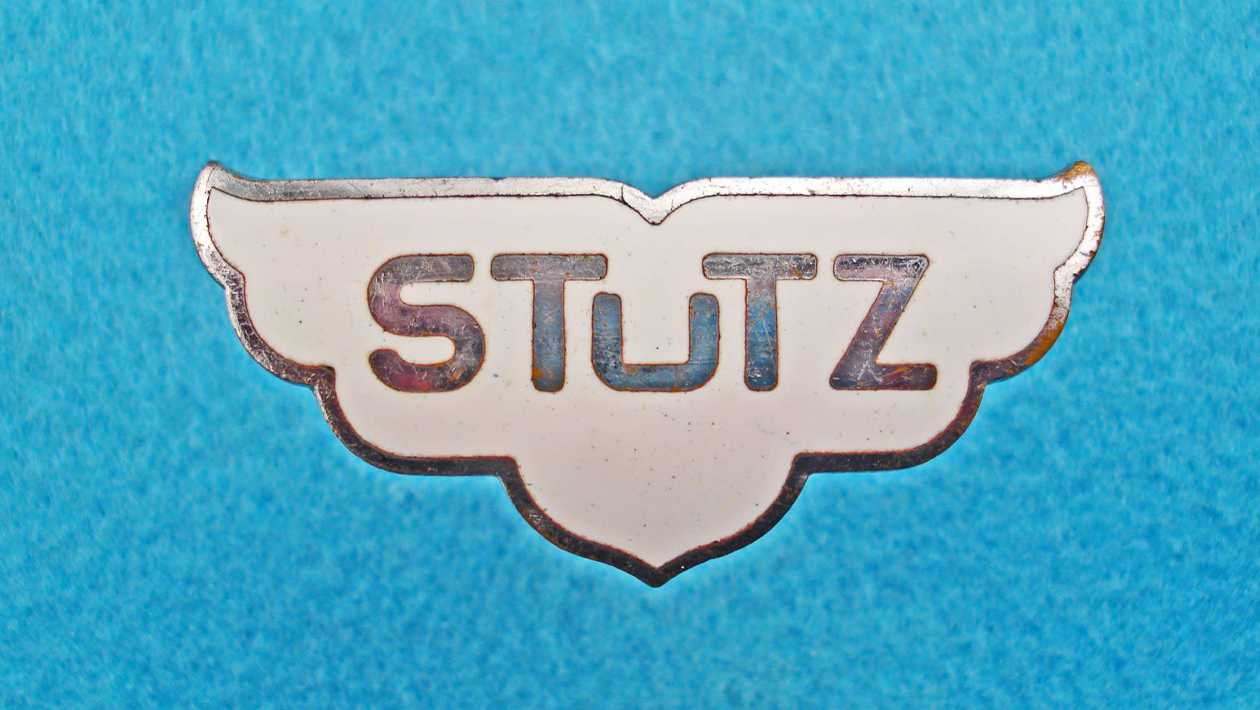
A less expensive, less powerful six-cylinder car called the Blackhawk was introduced by Stutz in 1929 as an independent make. This year was a difficult period for the Stutz company, facing many lawsuits and bringing in new management.
In 1929 it was decided to remove the Stutz scarab wing motif for the Model M, replacing it with a rad bar emblem. As the picture below shows, the plain winged Stutz 8 emblem was placed in the middle of a bar across the radiator.
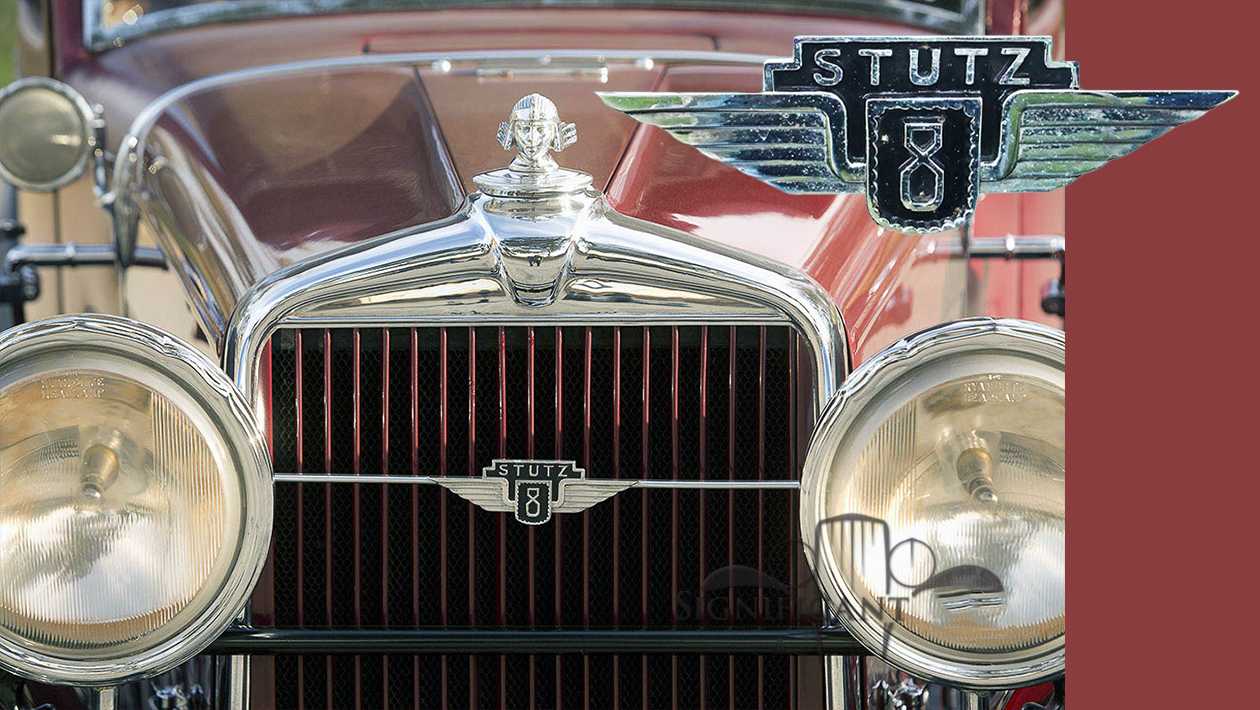
These pictures below show Stutz bumper and hub emblems that were carried on a few Stutz Model M and Series BB cars.
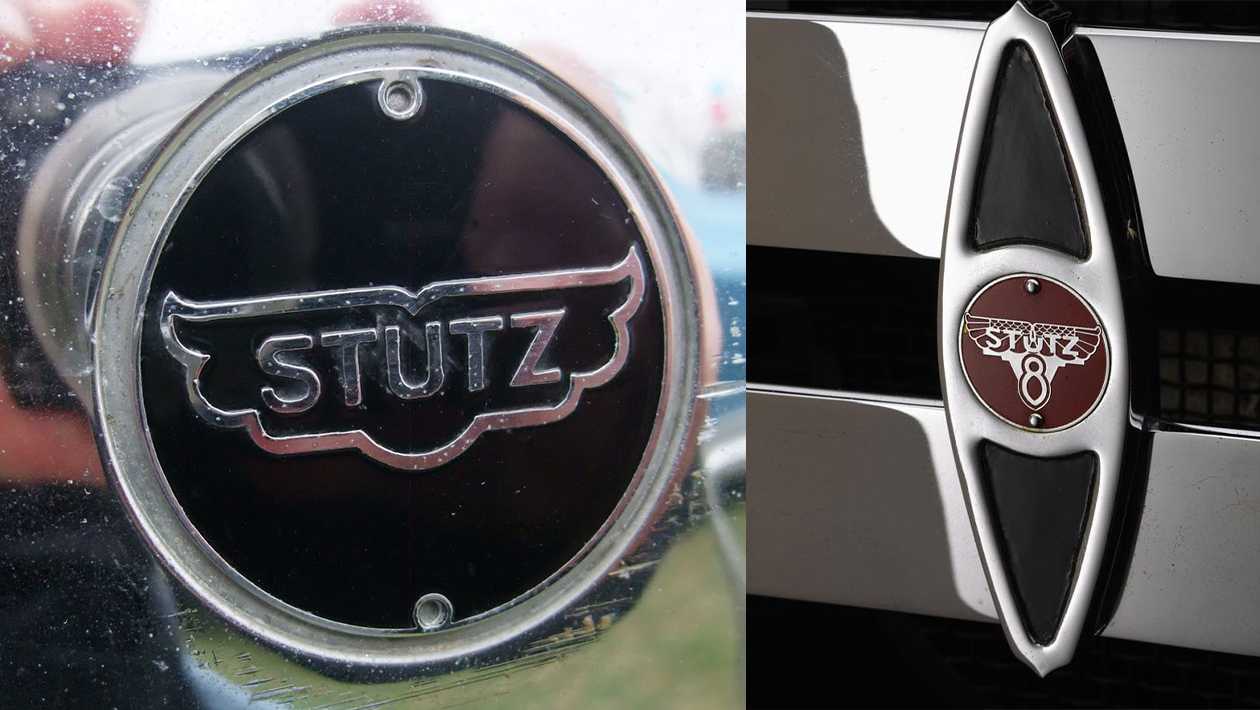
In 1932 the Stutz Models SV-16 and DV-32 were given new emblems designs. These cast metal emblems were mounted on a bar between two lower headlights, and similar emblems with an enamel finish on the hub cabs, as shown below.
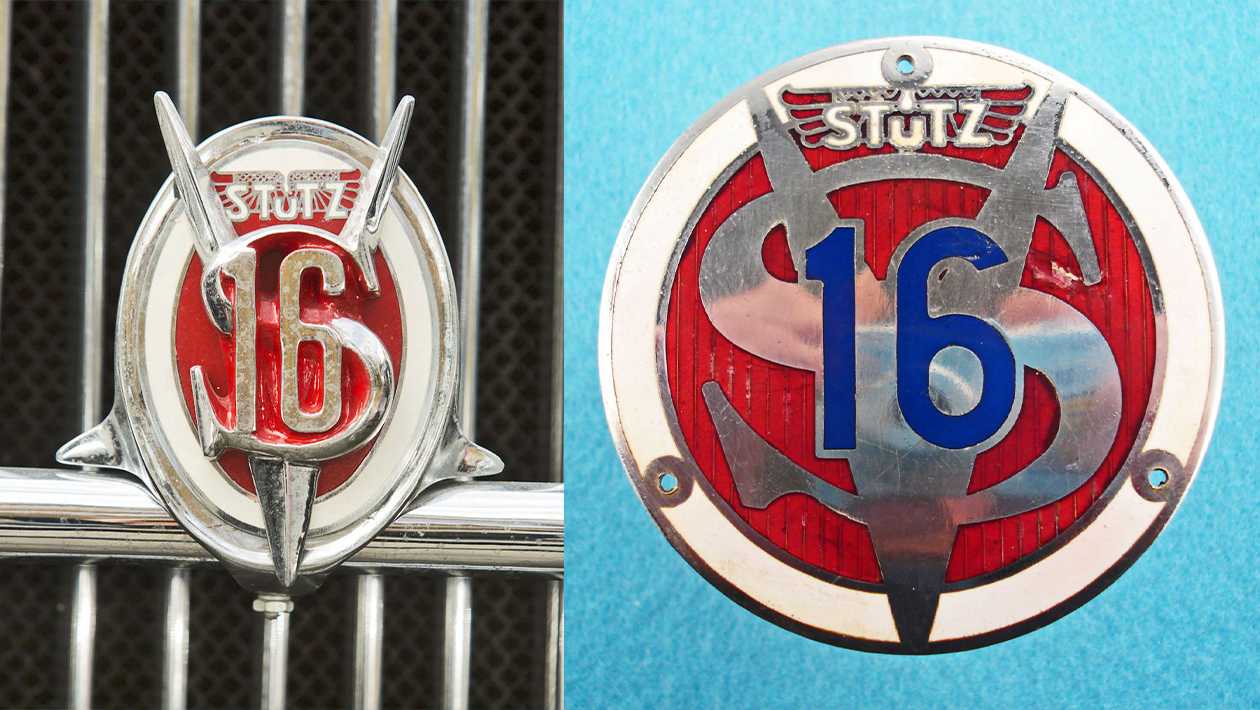
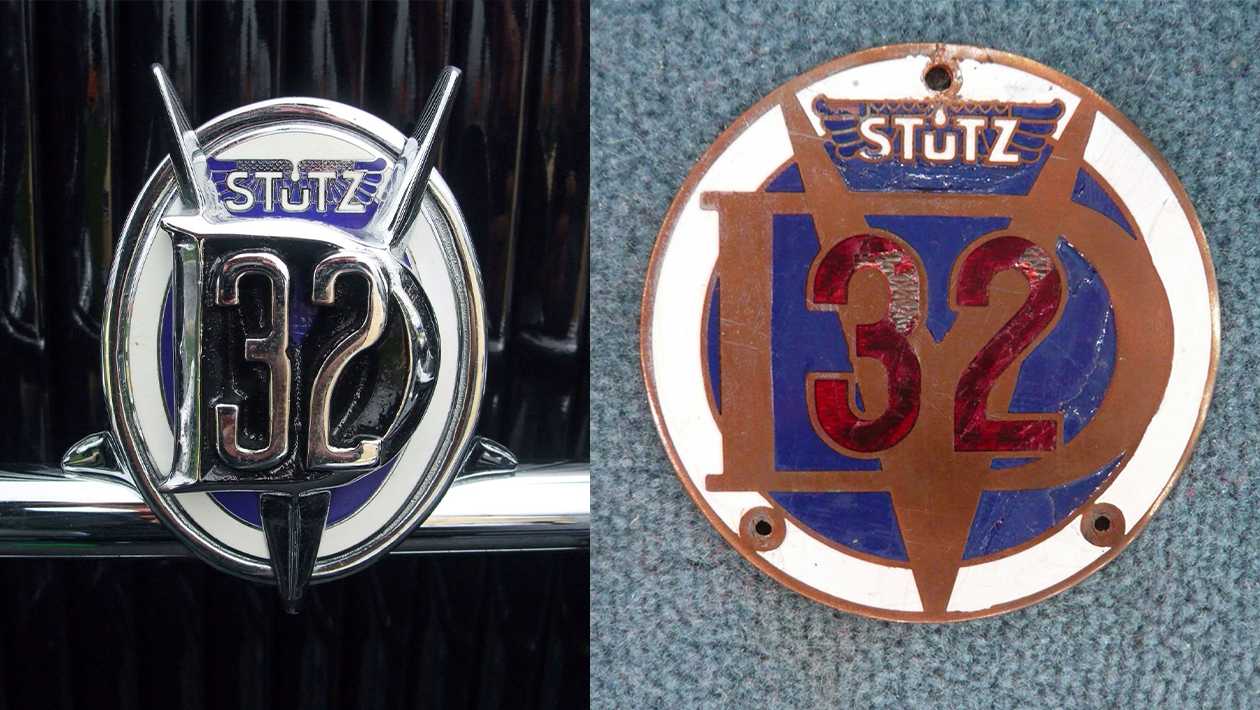
In 1932 the 115 hp SV-16 and the fabulous 152 hp DV-32 were introduced and the legendary Bearcat name was revived. By this time the Great Depression was in full force and efforts had to be made to reduce expenses and prices but sales slumped and production fell. Incredibly, by 1934 only six Stutz cars were bought and a year later it was all over for the Stutz automobile.
The company had bought the Pak-Age-Car organization in 1932 and went on to manufacture the Stutz Pak-Age-Car until 1938. A year later, in 1939, the Stutz Motor Car Company was finished.
Click here to find out which car logo came in 5th place in the best car logos of all time.

Read more on
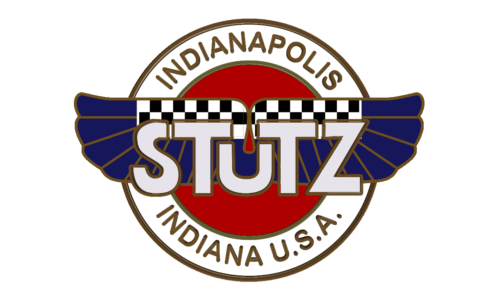
We're on Twitter. Are you following us?
Check us out here.Related Stories
Advertisement Advertisement
Advertisement Advertisement
Advertisement

